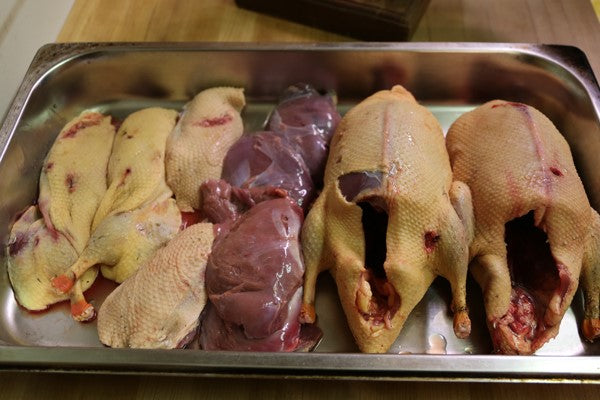
Brining Game Birds 101
Some might accuse ducks and
geese of being strong in flavour with a grainy texture…but waterfowl is
absolutely delicious when prepared right!

Some might accuse ducks and
geese of being strong in flavour with a grainy texture…but waterfowl is
absolutely delicious when prepared right!